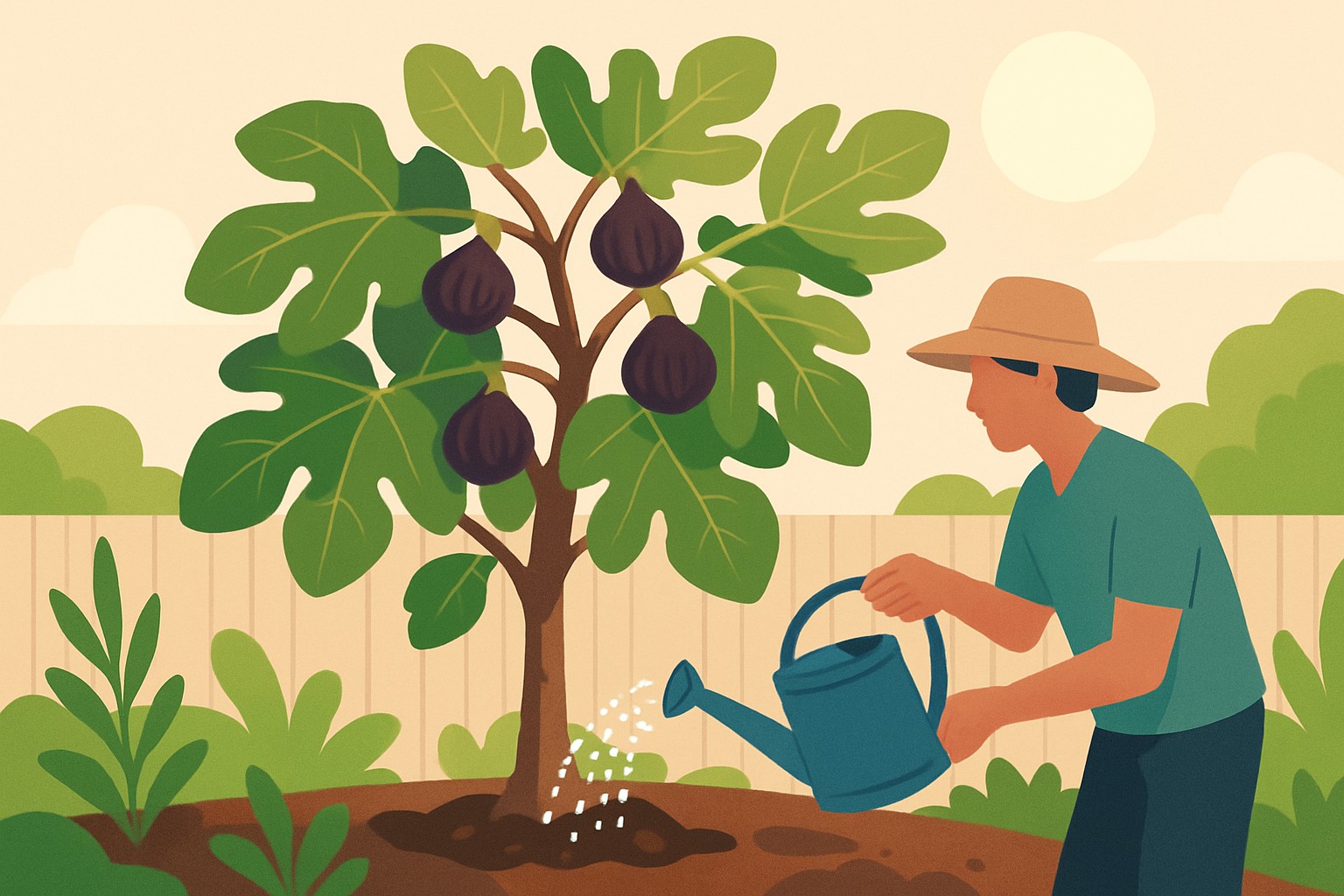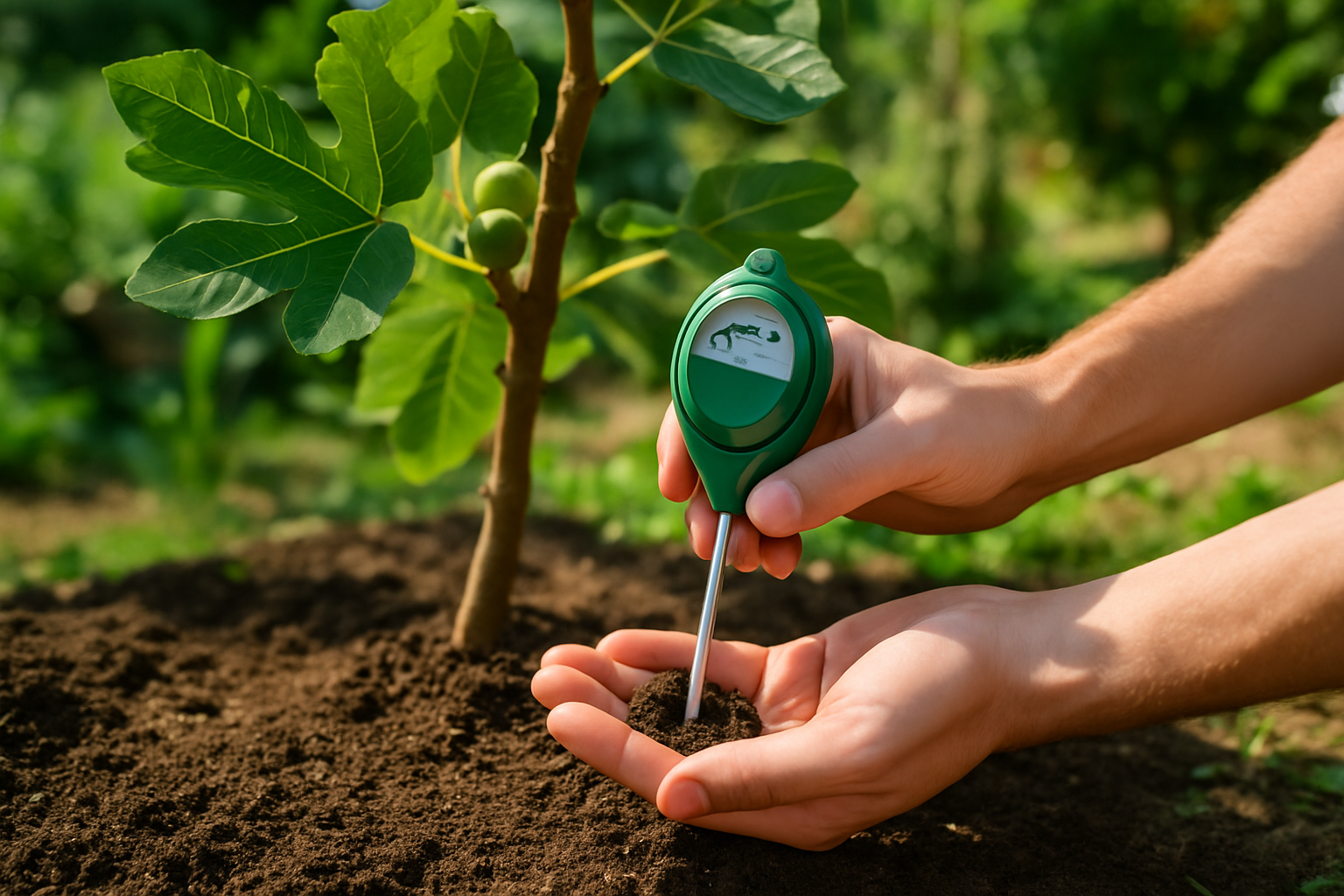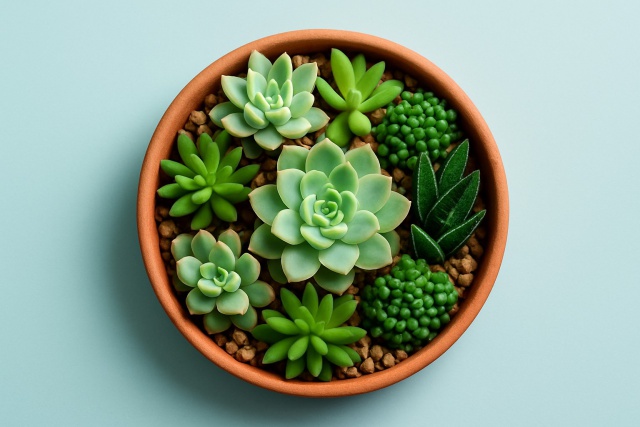How to Water a Fig Tree Without Overdoing It

This handy guide helps you strike the perfect balance keeping your fig tree happily hydrated and thriving with a little TLC.
- Get the lowdown on spotting signs of underwatering and overwatering so your fig tree doesn’t end up stressed or with soggy roots.
- Discover the ideal time of day to water and tricks that help water soak in deep while sneaking past evaporation in the heat.
- Learn how to tweak your watering routine depending on soil type, climate, or the size of your leafy friend.
- Grab down-to-earth tips on boosting soil drainage and layering mulch to keep moisture levels just right—not too dry, not drowning.
Fig trees are a fantastic choice for home gardens because they have delicious fruit and charming lush leaves that catch the eye. Getting the watering just right can be a bit of a Goldilocks situation. Too little and the tree starts to stress, too much and you risk root troubles.
Fig Tree Water Requirements A Handy Guide
Fig trees (Ficus carica) are perfectly at home in Mediterranean climates where hot dry summers meet mild wet winters. They have a moderately deep root system that’s handy at sucking up moisture from the soil during stubborn dry spells. They aren’t fans of soggy feet since too much water spells trouble. While fig trees generally shrug off short droughts better than many other plants, they can’t stick around if their roots stay waterlogged too long. This cuts off oxygen and leads to root rot.
How to Tell When Your Fig Tree Needs Water (Because They Can’t Exactly Call You!)
- Leaves start to wilt or droop which is a clear sign your plant is thirsty.
- When you check the soil about 1 to 2 inches down it usually feels dry like it’s begging for a drink.
- New growth tends to slow down quite a bit and sometimes grinds to a halt which is never a great sign.
- Older leaves often decide to call it quits and drop off earlier than you’d expect.
How to Spot the Telltale Signs of Overwatered Fig Trees
- Leaves often turn yellow and sometimes have those pesky brown edges that make you wonder what went wrong.
- Roots might get soft or start showing signs of rot which is never a good look.
- Soil tends to stay soggy or wet long after you’ve watered as if it’s decided to hold onto every drop.
- You could spot mold or mildew popping up on the soil surface or lurking around the base of the tree like uninvited guests at a dinner party.
Overwatering is a classic slip-up for many gardeners who think drowning their plants will somehow make them happier and healthier. In reality, too much moisture suffocates the roots by cutting off oxygen. It also creates a cozy environment for fungal diseases to move in which can really take a toll on your fig tree and shrink its fruit harvest.
What Factors Really Influence How Much Water a Fig Tree Needs
Several factors come into play when figuring out how often and how much to water your fig tree. The type of soil really dictates how well it holds onto moisture, while the climate has a say in evaporation rates and how thirsty the tree gets. Then there’s the season, which can change the watering game quite a bit.
| Factor | Watering Frequency | Water Volume | Notes |
|---|---|---|---|
| Sandy Soil | Once a week to every two weeks in summer | Moderate | Drains quickly and dries out fast, so don’t let it catch you off guard |
| Loamy Soil | Every 10 to 14 days | Moderate to deep | Holds moisture pretty well, making life a bit easier for watering |
| Clay Soil | Every 2 to 3 weeks | Less frequent but deep | Drains slowly, so keep an eye out to avoid soggy roots |
| Spring Season | Moderate watering | Moderate | Trees are waking up and really craving steady moisture to thrive |
| Summer Season | Weekly to every two weeks | Deep watering | High evaporation and transpiration rates mean your trees are thirsty business right now |
| Fall Season | Water less often | Light to moderate | Plants are gearing up for dormancy, so ease back on the H2O |
| Winter Season | Water minimally or not at all | Minimal | With plants taking a nap, avoid soggy soil and overwatering |
| Container Planting | Often daily up to every two days | Smaller amounts | Soil dries out fast here, so keep a close eye and don’t let it go thirsty |
| Ground Planting | Weekly or as needed | Deep watering | Roots have room to stretch, so go deep to keep them happy |
Step-by-Step Guide on How to Water a Fig Tree the Right Way (Without Drowning It or Leaving It Thirsty)
- Stick your finger about 2 inches into the soil or use a moisture meter to check if your tree needs water. 2. Aim to water early in the morning or late in the afternoon because this reduces evaporation and lets the water soak in deeper where it matters. 3. Adjust watering based on your tree's size and soil type. The goal is to moisten the root zone evenly rather than soaking just one spot like a sprinkler gone wild. 4. Use soaker hoses or drip irrigation when possible and water slowly. This helps the water seep in deeply instead of running off like it’s trying to escape. 5. Watch for soggy soil. If the ground still feels damp, hold off on watering to avoid drowning your tree’s roots in water. 6. A little observation goes a long way. See how your fig tree responds over the next few days and adjust your watering routine based on its growth and how lively the leaves look.
Check soil moisture by sticking your finger about 2 inches into the soil. If it feels dry at that depth it is probably time to give your plant a good drink. If you want to skip the guesswork entirely moisture meters are a real game-changer. They give you a straightforward readout that takes all the guessing out of the picture.

Testing soil moisture near a fig tree using a moisture meter and the finger test technique
Fig trees grown in containers dry out faster because they have less soil and more air exposure. They usually ask for a drink more often but in smaller sips. On the flip side, fig trees planted in the ground have sprawling root zones. You can water them less frequently but give them a good deep soak when you do.
Handy Tips to Keep Overwatering at Bay
- Opt for soil mixes that drain exceptionally well and are rich in organic material to prevent any pesky water buildup.
- Apply a layer of mulch around the plant’s base to keep the soil moisture steady and reduce evaporation, which your plants will appreciate.
- Water deeply but avoid overdoing it. Let the soil dry out a bit between waterings so the roots can stretch and grow strong.
- Adjust your watering schedule with the seasons. Use less water when it’s cooler and wetter and increase it when things heat up because plants don’t like sitting in soggy soil.
- If your soil is heavy clay, improve drainage by mixing in gritty materials or raising container pots with drainage layers to keep water flowing.
After you’ve given your plant a good drink, keep an eye out for soil that stays soggy for way too long or leaves that start looking a bit off-color—these are classic telltale signs you might be overwatering.
How to Troubleshoot Common Watering Issues with Fig Trees A Down-to-Earth Guide
Underwatering usually shows up as dry, brittle leaves and a noticeable slowdown in growth—basically your fig tree waving a little white flag. On the flip side, overwatering often results in yellow leaves and nasty root rot lurking below the surface. To dodge the underwatering bullet, try to keep your watering routine steady during dry spells and throw down some mulch to help the soil hold onto moisture like a champ. If overwatering sneaks in, take a good look at those roots for any signs of rot and snip away the damaged bits. Mixing in a bit of sand or organic matter can work wonders for boosting drainage. It’s key to tune your watering habits to the weather and how the soil feels beneath your fingers—I've found a moisture meter can be a handy little sidekick.




